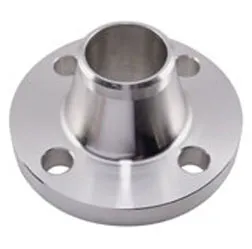-
Cangzhou Yulong Steel Co., Ltd.
-
Phone:
+86 13303177267 -
Email:
admin@ylsteelfittings.com
- English
- Arabic
- Italian
- Spanish
- Portuguese
- German
- kazakh
- Persian
- Greek
- French
- Russian
- Polish
- Thai
- Indonesian
- Vietnamese
- Zulu
- Korean
- Uzbek
- Hindi
- Serbian
- Malay
- Ukrainian
- Gujarati
- Haitian Creole
- hausa
- hawaiian
- Hebrew
- Miao
- Hungarian
- Icelandic
- igbo
- irish
- Japanese
- Javanese
- Kannada
- Khmer
- Rwandese
- Afrikaans
- Albanian
- Amharic
- Armenian
- Azerbaijani
- Basque
- Belarusian
- Bengali
- Bosnian
- Bulgarian
- Catalan
- Cebuano
- China
- China (Taiwan)
- Corsican
- Croatian
- Czech
- Danish
- Esperanto
- Estonian
- Finnish
- Frisian
- Galician
- Georgian
- Kurdish
- Kyrgyz
- Lao
- Latin
- Latvian
- Lithuanian
- Luxembourgish
- Macedonian
- Malgashi
- Malayalam
- Maltese
- Maori
- Marathi
- Mongolian
- Myanmar
- Nepali
- Norwegian
- Norwegian
- Occitan
- Pashto
- Dutch
- Punjabi
- Romanian
- Samoan
- Scottish Gaelic
- Sesotho
- Shona
- Sindhi
- Sinhala
- Slovak
- Slovenian
- Somali
- Sundanese
- Swahili
- Swedish
- Tagalog
- Tajik
- Tamil
- Tatar
- Telugu
- Turkish
- Turkmen
- Urdu
- Uighur
- Welsh
- Bantu
- Yiddish
- Yoruba

Aug . 18, 2024 11:02 Back to list
Understanding the Features and Benefits of Concentric Reducer Flanges in Piping Systems
Understanding Concentric Reducer Flanges A Comprehensive Overview
In the realm of piping and fluid transport systems, the concentric reducer flange plays a critical role in the seamless transition between different pipe diameters. This component is particularly vital in industries such as oil and gas, water treatment, and chemical manufacturing, where efficient flow management is paramount. Understanding what a concentric reducer flange is, its applications, advantages, and installation considerations is essential for professionals involved in these sectors.
What is a Concentric Reducer Flange?
A concentric reducer flange is a type of fitting used to connect two pipes of different diameters while maintaining a consistent flow path. The term concentric refers to the design of the reducer, which allows the larger and smaller diameters to share a common centerline. This geometrical shape minimizes turbulence during fluid flow, thereby enhancing system efficiency and performance.
These flanges are typically designed to be welded or bolted to the ends of pipes, providing a reliable connection that can withstand high pressures and varying temperatures. They are available in a variety of materials, including stainless steel, carbon steel, and plastic, allowing for adaptability to different environments and chemical compatibilities.
Applications of Concentric Reducer Flanges
Concentric reducer flanges are utilized across several industries
1. Oil and Gas In this industry, maintaining pipeline integrity is crucial. Concentric reducer flanges facilitate the adjustment of pipe sizes to transport hydrocarbons efficiently and safely.
2. Water Treatment In water treatment facilities, these reducers are used in various processes, including filtration, sedimentation, and disinfection, where controlling flow rates is essential for effective treatment.
3. Chemical Manufacturing The chemical industry often requires the transportation of various substances through pipelines that may vary in diameter due to process requirements. Concentric reducers contribute to maintaining optimal flow and minimizing the risk of leaks.
4. HVAC Systems In heating, ventilation, and air conditioning systems, these flanges help to manage airflow effectively, ensuring that air is distributed evenly across different spaces.
Advantages of Using Concentric Reducer Flanges
concentric reducer flange

The use of concentric reducer flanges offers several benefits
1. Reduced Turbulence The concentric design allows for a smooth transition between different pipe sizes, reducing turbulence and promoting efficient flow.
2. Versatility Available in various materials, sizes, and pressure ratings, these fittings can be tailored to meet the specific requirements of any piping system.
3. Ease of Installation Concentric reducer flanges are relatively easy to install due to standardized dimensions and bolt patterns, facilitating quicker assembly and reducing installation costs.
4. Enhanced Reliability By providing a robust connection between different pipe sizes, these flanges minimize the risk of leaks and failures, contributing to the overall reliability of the pipeline system.
Installation Considerations
While the installation of concentric reducer flanges can be straightforward, several factors should be considered
1. Alignment Ensuring proper alignment of pipes is crucial to avoid stress and potential failure post-installation.
2. Material Compatibility Choosing the right material for the reducer flange based on the transported fluid's chemical properties is essential to prevent corrosion and degradation.
3. Pressure and Temperature Ratings It’s important to select flanges that meet or exceed the required pressure and temperature ratings of the system to maintain safety and operational integrity.
In conclusion, concentric reducer flanges serve as vital components in various piping systems, ensuring efficient fluid flow between pipes of different diameters. Their advantages in reducing turbulence, enhancing reliability, and providing versatility make them essential for numerous applications across multiple industries. Understanding their characteristics and installation prerequisites ensures that engineers and technicians can effectively incorporate these fittings into their fluid transport systems, ultimately contributing to operational efficiency and safety.
Latest news
-
ANSI 150P SS304 SO FLANGE
NewsFeb.14,2025
-
ASTM A333GR6 STEEL PIPE
NewsJan.20,2025
-
ANSI B16.5 WELDING NECK FLANGE
NewsJan.15,2026
-
ANSI B16.5 SLIP-ON FLANGE
NewsApr.19,2024
-
SABS 1123 FLANGE
NewsJan.15,2025
-
DIN86044 PLATE FLANGE
NewsApr.19,2024
-
DIN2527 BLIND FLANGE
NewsApr.12,2024
-
JIS B2311 Butt-Welding Fittings LR/SR 45°/90° /180°Seamless/Weld
NewsApr.23,2024











